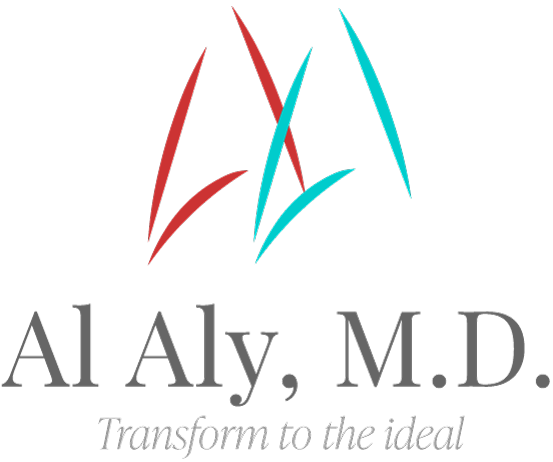Arm Lift (Brachioplasty)
in Dallas, TX
Model
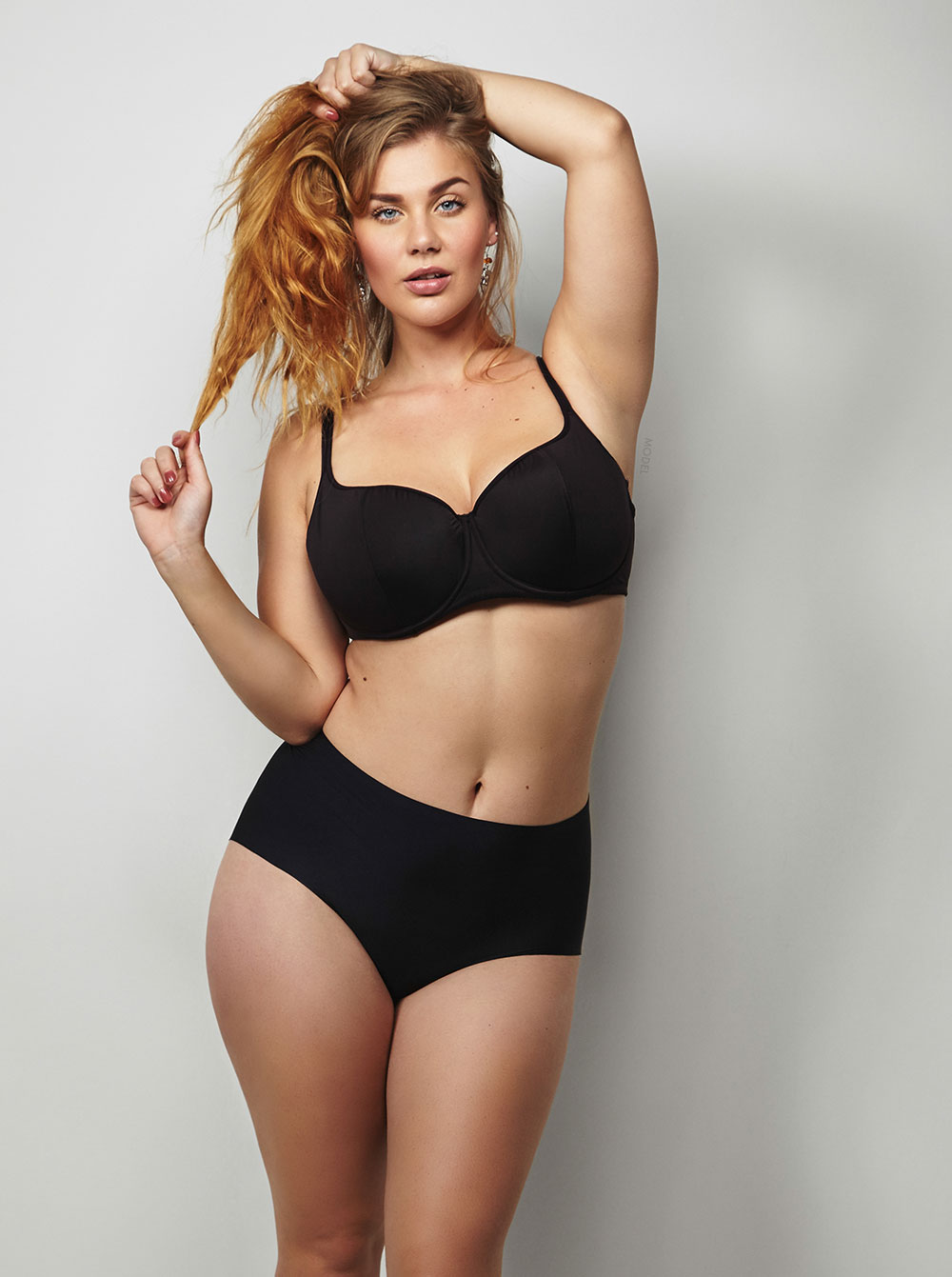
Significant weight loss leads to hanging, loose skin in many areas of the body, especially the upper arms. Many patients who achieve massive weight loss are happy about shedding the pounds but are unhappy with their upper arms because losing weight often leads to excess upper arm flabbiness and hanging skin. It can be discouraging to accomplish massive weight loss only to experience sagging excess skin that detracts from their appearance. These patients regularly avoid sleeveless shirts and other revealing clothing, even in warm weather. Frustrated with how saggy skin does not respond to exercise, they will often continue to have decreased self-esteem.
What Is Brachioplasty?
An arm lift, or brachioplasty or upper arm reduction, is a cosmetic procedure designed to eliminate the hanging upper arm skin and fat to provide a slimmer, more defined contour that highlights the underlying musculature of the arms. Additionally, brachioplasty gives patients more freedom and self-confidence, allowing them to enjoy their post-weight loss aesthetic fully.
What Is an Aly-Posterior Scar Brachioplasty?
There are a variety of ways to reduce upper arm excess. Dr. Aly developed his arm lift technique over 20 years ago specifically to treat the extensive nature of upper arm excess that massive weight loss patients often present with. This technique is based on understanding how the deformity is formed and its anatomic basis. This was understood poorly by most plastic surgeons until after the introduction of the Aly-posterior scar brachioplasty.
Dr. Aly discovered that a standard anatomic structure of the arm called the “posterior fold,” is what becomes excessive in severe cases of sagging arm skin.
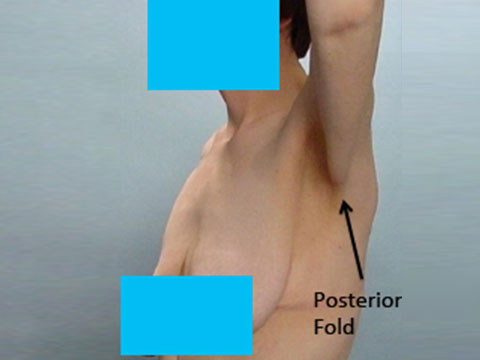
The posterior fold transitions from the upper arm, through the armpit, and onto the chest wall. In people who have normal anatomy, the skin of the posterior fold is adherent to the underlying muscles. It is part of the normal appearance of the upper arm as it connects the upper arm to the armpit and chest wall.
Dr. Aly discovered that in massive weight loss patients who present with upper arm excess, the posterior fold is what becomes excessive. It hangs down and becomes problematic for the patient.

The purpose of the Aly-posterior scar brachioplasty is to eliminate the excessive hanging excess skin and fat and match the shape of the underlying muscles.
One can think of the upper arm as a cylinder with an “inner core” comprising the muscles and bone. The inner core is then surrounded by fat of varying thicknesses and the overall skin cover. This is shown below in a cross-section, or slice, of the average arm.
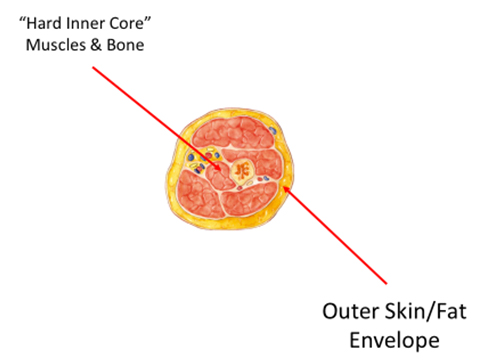
The arm fat content increases significantly in patients who gain a lot of weight. As fat increases, the skin stretches to accommodate it. On top of this, as we age, the skin loses elasticity, affecting its ability to return to its prior state. Subsequently, with weight loss, the fat is reduced, leading to a deflation of the overlying skin, which becomes redundant and then hangs from the inner core of muscles and bone.

The Aly-posterior scar brachioplasty eliminates the excess skin, as can be seen above.
Does an Arm Lift Leave a Scar?
Dr. Aly’s arm lift procedure is called a “posterior scar” technique because the scar is intentionally located along the edge of the arm when the arm is raised to 90 degrees away from the chest. Posterior means that the incision mark is situated more towards the back.
Alternatively, the scar can be placed more towards the front of the arm, which some surgeons use, but it is not used or preferred by Dr. Aly.
Dr. Aly prefers a scar placed more towards the back for multiple reasons. The first reason is that he believes that the part of the arm most visible during regular interaction with other people is the front of the arm. For example, if someone is giving a presentation in front of an audience and their arms are uncovered, the part of the arm that is more likely to be seen is the front of the arm. Placing the incision and subsequent scar on the back of the arm limits its daily exposure in most cases.
A second reason Dr. Aly prefers the scar towards the back is that the area does not have essential structures that can be harmed during the surgery.
What Are the Typical Complaints of Patients Who Want Brachioplasty?
Most patients are unhappy with the hanging skin and varying degrees of fat in the upper arm. Sometimes they will call their arms their “bat wings.” Most people will present with excess that starts at the elbow, reaches the armpit, and goes on to the chest wall.
Typically, patients will have a hard time finding clothing that fits them or that they want to wear, given their condition. They are more apt to hide or cover their arms and may also complain of itching and skin irritation.
To compound these issues, many of these concerns appear after massive weight loss, which should be a joyous time in a patient’s life. However, dealing with excess skin that is uncomfortable and unappealing can detract from the great accomplishment of weight loss. Brachioplasty is designed to give these patients their freedom and comfort back.
What Does an Aly-posterior Scar Brachioplasty Accomplish?
For the appropriate candidate, this brachioplasty technique effectively eliminates the hanging excess skin and fat. It will lead to the arm taking the shape of the underlying muscles. By eliminating excess skin and tightening the contour of the arm, Dr. Aly can restore the arms to a more healthy, ideal aesthetic.
View our arm lift before and after photo gallery to see photos of previous patients.
Who Needs an Arm Lift/Upper Arm Reduction?
The majority of patients who desire upper arm reduction fit into two groups. The first group is made of patients who are obese and their arms are very thick and large. These patients are not ideal to operate on and most often are advised to pursue weight loss prior to addressing the excess.
The second group is made up of massive weight loss patients who have lost a great deal of fat from the upper arms but have large amounts of hanging skin with varying degrees of remaining underlying fat. This is the group that is amenable to the surgical treatment described here.
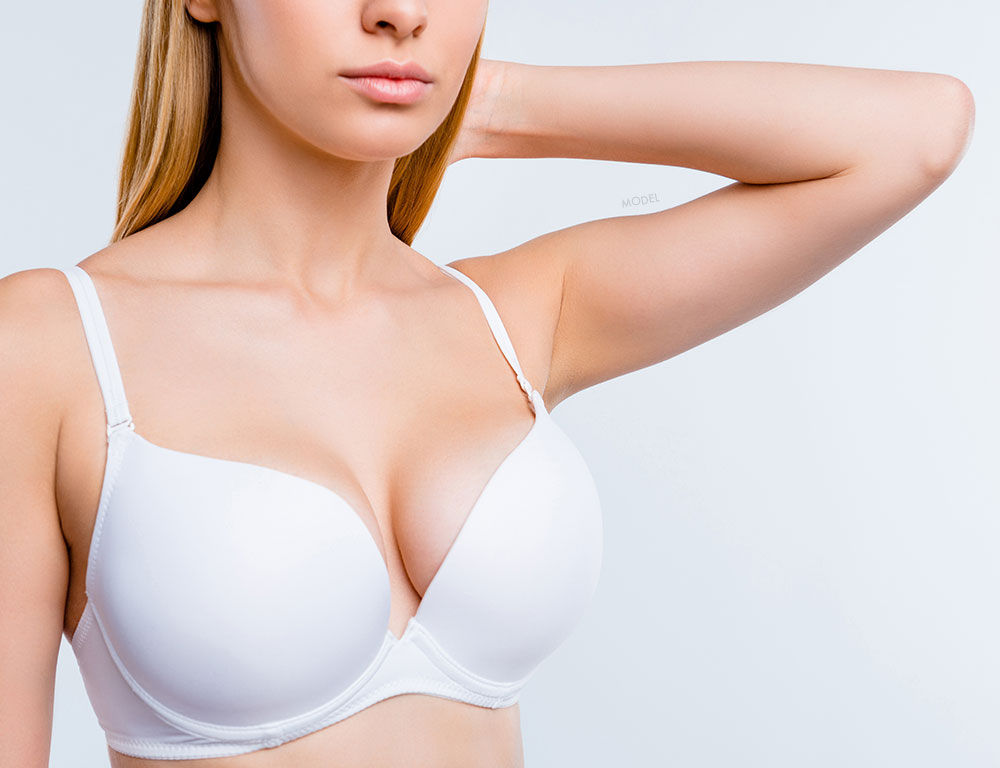
Good Candidates for an Aly-Posterior Scar Brachioplasty:
- Have stabilized their weight loss for at least three months, as it is best for patients to know they can maintain a healthy weight before surgery.
- Have significant hanging excess skin of the upper arms with minimal remaining fat—ideally, the less fat left in the arm, the better the results.
Who Is Not a Good Candidate for Brachioplasty?
- Patients with active and/or uncontrolled major medical problems such as heart disease, lung disease, diabetes, high blood pressure, etc.
- Patients who have active uncontrolled psychological problems.
- Patients who are either gaining or losing weight, as weight stabilization is required for this procedure.
- Patients whose arms are still very full of fat: even if some skin is removed in this type of patient, the resulting arm will still be substantial.
- Patients who have unrealistic expectations for results or are seeking cosmetic procedures under the influence of another person.
How Is an Aly-Posterior Scar Arm Lift Performed?
An arm reduction is a surgical procedure that eliminates hanging skin and underlying fat from the upper arm. In general terms, the surgeon removes the excess through an incision that runs along the length of the arm. Plastic surgeons utilize differing techniques. Dr. Aly designed the Aly-posterior scar approach specifically for massive weight loss patients. Below is a description of the procedure and how it differs from other methods.
Marks are made to encompass the excess, which, as noted above, is located at the “posterior fold,” and they continue through the armpit and onto the chest wall. If one does not include removal from all of these areas, patients often complain that not enough was removed, and there can be residual excess of the armpit.
Dr. Aly prefers to perform this procedure under a general anesthetic. Once the patient is asleep, several maneuvers are performed to confirm the amount that needs to be removed, leading to the best possible contour of the upper arm, armpit, and chest wall.
Sequential segments of the arm excess are removed and closed temporarily with clips, to accomplish the surgery in the safest and most efficient manner.
After all of the segments are removed, the external clips are replaced with internal sutures so that the final closure has no outside stitches. Finally, medical-grade glue is placed on the skin.
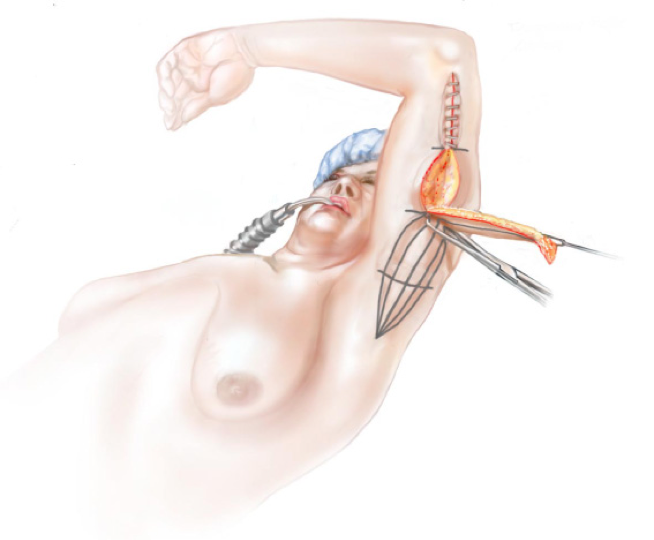

Does Dr. Aly Use Drains With Arm Lift Surgery?
Dr. Aly does not use drains in any of his body contouring procedures, including the Aly-posterior scar brachioplasty. Drains supposedly decrease the chances of developing a seroma, which is a fluid collection that can occur after surgery in the area operated on. Dr. Aly has found that using internal sutures that close space where potential fluid can accumulate is a far more effective technique for reducing the rate of seromas. This results in a lower-maintenance recovery and aftercare process for the patient, as they will not have to monitor the drains nor have them removed.
Will Brachioplasty Help Me Lose a Significant Amount of Weight?
Body contouring procedures, in general, should not be thought of as a way of reducing weight—they are the step after weight loss that focuses on aesthetic improvement and restoring the best possible contour, tighter skin, and a more youthful appearance. Additionally, the amounts of skin and fat removed are often negligible compared to the entire body mass, so there will be little change in the patient’s weight with brachioplasty.
Brachioplasty should be considered one of the surgeries that improves and creates contours of the body part operated on, rather than a weight loss surgery.
What Is Dr. Aly’s Experience With Arm Lift Surgery?
Dr. Aly is a board-certified plastic surgeon specializing in body contouring procedures and the innovator of the Aly-posterior scar arm lift. As the creator of this technique, Dr. Aly is the preeminent authority and world expert on the Aly-posterior scar arm lift. In addition to his own extensive experience, Dr. Aly regularly provides educational resources to other plastic surgeons to enable them to employ and perfect this revolutionary technique.
Dr. Aly also specializes in body lift surgery, which targets excess skin around the circumference of the body, for patients who have achieved significant weight loss. As an expert in body contouring procedures, Dr. Aly holds unparalleled experience that is reflected in his technique and results.
What Results Can I Expect After an Arm Lift?
It is important to note the Aly-posterior scar technique is based on sound “plastic surgery principles,” which dictate that the surgeon can:
- “Understand the deformity” (described above).
- Recognize the “ideal normal,” which in this case is the shape of the underlying muscular anatomy.
- Design an operation that allows one to approximate that ideal as much as possible. Note that only some patients can achieve the ideal contour. As a general rule, “the attained results are highly dependent on the patient’s presentation.”
The improvement in arm contour after Aly-posterior scar brachioplasty generally ranges from very good to superb. As this procedure primarily deals with removing excess skin, the more deflated an arm is at presentation, the better the result appears.
Following the Aly-posterior scar technique, patients can expect reduced excess arm skin and less residual fat for a slimmer aesthetic. In ideal cases, the patient’s arms will be more pleasingly contoured, providing a more youthful aesthetic and revealing the underlying musculature for a healthier, more revitalized appearance.
View our arm lift photo gallery to see the results of previous patients.
Have additional questions about Aly-posterior scar brachioplasty?
Contact us today to find out if you’re a candidate for arm lift surgery and how it can benefit you.
